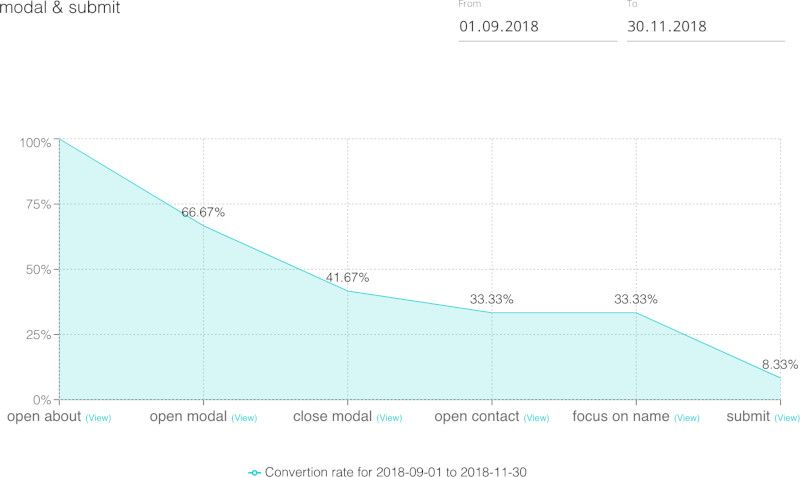May 26, 2022
4 min read
Conversion analysis solutions – how to create and analyze event-based conversion?
Have you ever wondered if your analytical tools setup will allow you to draw the right conclusions for your business?

Most probably, when it comes to conversion funnels, and conversion rate optimization tools, everything has already been said. But yet in the era of ubiquitous pop-ups, animations and hoovers, analyzing conversions based only on URLs is simply insufficient. There is also growing dissonance on the market between the implementation of complex analyses using artificial intelligence, machine learning and so-called half-baked analytics (that will implement anything that’s currently trendy).
How to find real customer problems?
So how do we detect actual customer problems, and more importantly, how do we draw the right conclusions for our business? The answer is comprehensive event-based conversion analysis, based on events and user visits. Sounds complicated? Well, it’s not.
The most popular and widespread way of measuring conversion used to be analysis based on URLs (because not everyone can afford to script each potential event on the page). However, let’s face the truth – neither single numbers (indicators) nor qualitative analysis of sessions alone will give us the full picture, or provide specific, ready to implement solutions. Conversion Waterfalls come to the rescue here.

What is Conversion Waterfall?
They are nothing but extended conversion funnels that allow you to measure what has been missing so far, between page reloads – button clicks, user behavior while filling out forms, opening or closing all kinds of context windows. True, such conversion measurement has been possible for a while now, even with Google Analytics.
However, it used to require a lot of IT engagement, development and technical knowledge. The challenge of implementing analytics based on “small data” is to use solutions that are mindful about the methodology. In the case of Conversion Waterfalls, the auto-capture function (the event’s self-capture by the application) replaces IT and allows the analyst to provide the application with access paths to the elements and set the funnel.
An event based conversion analysis
Based on individual events, we can build very extensive funnels that take into consideration all types of events that our customer encounters along the way to buy. You think: This is great! I get accurate information on where users drop out, I know what drops we are dealing with and how this relates to the remaining steps on the path.
However, even such an accurate analysis will not provide us with solutions and will not bring the answer to the most important questions. E.g. why are we seeing a drop of users at this specific point? Therefore, in the case of Waterfall Conversion, this is not the end of the process. When such a “why?” question appears, by using Waterfalls for event-based conversion analysis we can immediately see what exactly happened to the user and why he did not perform the desired action.
How to analyze an event based conversion?
Based on the observations of sometimes even several recordings, it will become clear whether the users did not notice the button, the description of the field raised their doubts, something (e.g. pop-up) appeared on their screen, which distracted their attention or something else caused the fact that they didn’t move to the next step on the path.
Visit recordings analyses are the easiest way to find ready to be applied, quick wins almost immediately. The implementation of this solution for event-based conversion analysis allows you to improve your conversion results on a day to day basis.
Imagine a situation, where you start a marketing campaign that should generate a significant number of new baskets, but after the first day, you realize that sales instead of growing – drop. You check your campaign – everything works as it should. You move on to analyzing what clients’ paths looked like for this campaign. To your surprise, the browser did not keep the page’s cookies, so, as a consequence, the customers got a different offer on the landing page and a different one in the basket. Next step? You are able to react properly, without waiting for the end of the campaign and save a significant portion of your budget.
With this approach, remember that all Waterfall analytics is retroactive, so you don’t have to be sure from the beginning what you want to research and set data collection for a specific scenario. You can always change the perspective or context if a new hypothesis appears based on user behavior. All you need to do is simply set up a new Waterfall saying: I check, I don’t guess!

And if you would like to receive newest information from cux.io about our product, sign up for the CUX newsletter.

